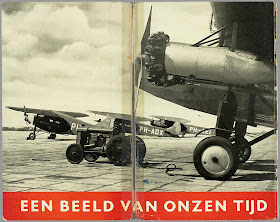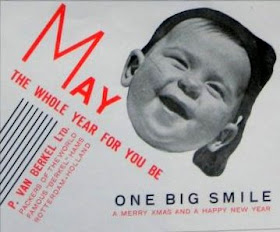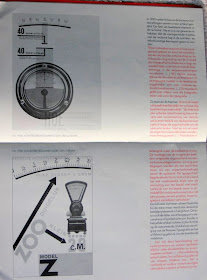 Blackpool, 1982 by Chris Steele-Perkins, from his book England, My England. Photograph © Chris Steele-Perkins / Magnum
Blackpool, 1982 by Chris Steele-Perkins, from his book England, My England. Photograph © Chris Steele-Perkins / MagnumFrom reissues of classic editions to an eye-opening collection of mobile-phone snaps, photography books in 2009 captured a medium in flux. Sean O'Hagan picks his favourites
- guardian.co.uk, Monday 28 December 2009 13.13 GMT
In 2009, photography grappled more than ever with the notion that the mobile phone, rather than the cheap digital camera, may yet make photographers of us all. It seemed apposite, then, that it was also a year in which old masters reasserted their importance with books that reminded us that the truly visionary are few and far between.
In many ways, the year belonged to Robert Frank. Now 85, the Swiss-born photographer was garlanded with a major American touring show to celebrate the 50th anniversary of the publication of his classic work The Americans. The catalogue, Looking In: Robert Frank's The Americans (Steidl, £49.90), is, hands down, my photography book of the year. Complete with absorbing essays, personal letters – to the likes of Jack Kerouac and Walker Evans – and contact sheets that show off Frank's extraordinary eye for the telling vignette, it is a must for anyone with an interest in photography's past and present.
The other big American photography book of the year has just been published. Irving Penn's Small Trades (Getty, £34.99) is a valediction of sorts for the great man, who died in October. Though better known for his fashion photography, Penn started the Small Trades project in 1950, photographing everyday subjects – plumbers, cleaners, shop assistants – in their work clothes between style shoots for French Vogue in his rented Parisian studio. Shot in austere blacks, whites and greys, the portraits possess a cumulative power that is full of quiet dignity, and subtler than Richard Avedon's similar images of American workers. (Intriguingly, one of the scouts who went out on the streets of Paris to select and then persuade the workers to pose was a young Robert Doisneau.)
Closer to home, the English were the subjects of two intriguing books: Simon Roberts's We English (Chris Boot, £40) and Chris Steele-Perkins's England, My England (Nothumbria Press, £30). Roberts' book is a kind of gentle celebration, its images captured on a large-format 5x4-inch camera and owing as much to the English landscape painting tradition as any photographic precedent. It's a grower. Steele-Perkins, a Magnum veteran, opts for a more sweeping documentary approach that shows the English at work and at play over the last four decades. By turns gritty and evocative, it is a book one imagines that Orwell would have liked very much. Another Magnum name,Philip Jones Griffiths, who died in 2008, is celebrated in Recollections (Trolley Books, £39.95). Renowned for his photojournalism from the Vietnam war, Jones Griffiths also travelled around Britain from the 1950s onwards, and this book shows off the range of his vision, from the hysteria of Beatlemania to the dogged war of attrition that were Northern Ireland's Troubles. In the main, though, this presents a gentler side of a photographer best known for his work at the eye of storm of battle.
If I had to choose one book of political photojournalism published this year, though, it would have to be Howard Bingham's Black Panthers 1968 (Ammo, £29.95). Bingham spent a year recording the Panthers' brief ascendancy during the radical ferment of 1968, and his images of the likes of Stokely Carmichael, Bobby Seale and Eldridge and the incredibly stylish Kathleen Cleaver are a wonderful portrait of a revolutionary time that seems long gone. Also in the late 60s, Danny Lyons was also doing some of his best work, most notably as a documenter of, and participant in, the American Civil Rights movement, as well as a chronicler of outlaw motorcycle gangs. Memories of Myself (Phaidon, £45) is a retrospective of some of his lesser-known photo essays, including images from the time he spent recording the lives of women who worked in a Colombian brothel. A pioneer of the edgy style of insider reportage, who immersed himself in his subject matter, Lyon deserves to be more widely known. This is a good place to start.
Best collaboration of the year must go to Anders Petersen and JH Engstrom, for their book From Back Home (Max Ström, £45). Engstrom started out as Petersen's assistant in the early 1990s, and it turned out they both came from the same area of Sweden, the mostly rural Varmlands. Thirty years separates them, but both of them set out to evoke their sense of home and belonging. The book is an uneven but always intriguing exploration of family, landscape and identity. Even more personal, and quirkier still, is Adam Bartos's Yard Sale Photographs (Damiani, €39), which does exactly what it says on the cover. Bartos is a master of the poetic mundane, and his camera captures the yard sale – the American equivalent of the car-boot – in close-up, in all its tacky and oddly beautiful detail. Never before has a discarded tennis racket held such visual poetry.
Finally, a book that is utterly of the moment but oddly timeless: Joel Grey's 1.3: Images From my Phone (Powerhouse Books, £21.99). Having found himself wandering though a small museum in Florida without his camera, Grey – a former actor who won an Oscar in 1972 – resorted to his Nokia 133. The images were so surprising that he kept shooting on his phone for seven months. The result is this engaging book, a kind of vivid and gritty visual diary of his travels. "For me, taking pictures is like asking questions", he says on his website. The questions he asks with his Nokia don't differ that much from the ones he asks on his Nikon – and that, in itself, may be the biggest question of all regarding the future of photography.





































